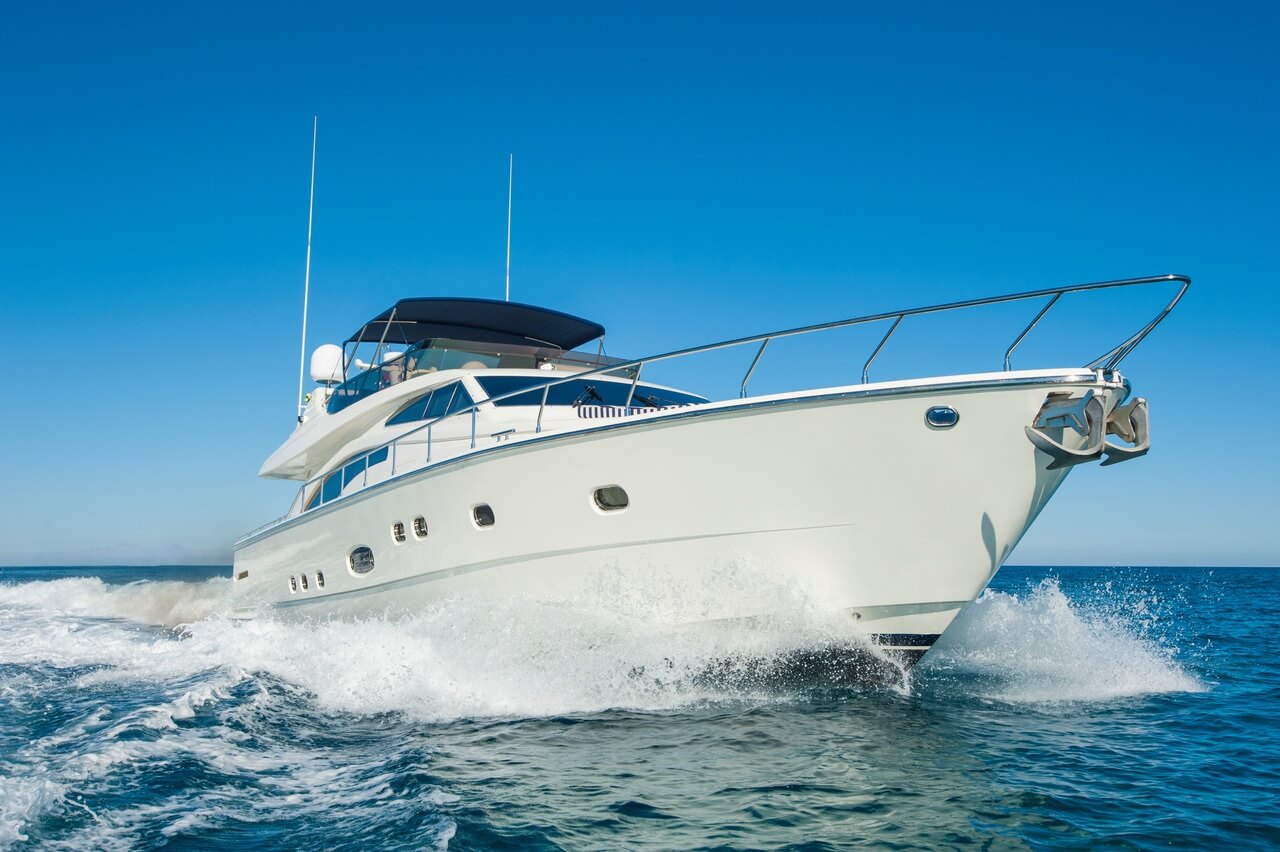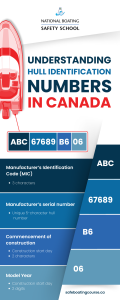
Understanding Hull Identification Numbers in Canada
As of August 1, 1981, all pleasure craft built in or imported into Canada are required to have a unique 12-digit Hull Identification Number. This ID number, also known as a serial number, must be permanently affixed to the vessel according to set rules. All boats in Canada must have a unique Hull Serial Number, including canoes, kayaks, rowboats, sailboats and motorboats.
Importance of Hull ID numbers
The HIN on your boat is a unique identifier. It has several important safety and regulatory functions:
- Helps find and identify lost or stolen boats
- Helps find and identify boats that are subject to recall
- Helps regulate and monitor boat resale value
- Helps verify that a boat meets specific manufacturing standards
Hull Identification Number format
An authentic HIN is 12 digits long. The first three characters are the Manufacturer’s Identification Code (MIC).
Example: ABC
The Government of Canada recognizes the authenticity of MICs originating from the US and does not require an additional 2-character country code in this case. However, if a boat is manufactured elsewhere in the world, the HIN must include a 2-character country code in addition to the MIC to indicate its place of origin.
Example of HIN country code for Finland: FI-ABC
The MIC is followed by the unique 5-character hull number.
Example: 1CA23
The last digits of the HIN indicate the construction start date (2 characters) and the Model Year (2 digits).
Example of a complete HIN for a boat made in Canada: ABC1CA23G204
Hull Identification Number rules
Canada’s Small Vessels Regulations outline specific rules about how and where to display your HIN number.
Where to display the HIN on your boat
The HIN must be permanently marked on the outside upper starboard quarter (upper right side) of the outside surface of the transom. It must be clearly visible when the vessel is in the water. If your vessel has no transom, the HIN should be displayed on the uppermost starboard side near the stern.
Secondary HIN location
The HIN must also be marked in a second location somewhere else on the hull. This should be a place that is not exposed to the elements, such as in the vessel interior or beneath a fitting or item of hardware.
The builder, manufacturer, rebuilder or importer of a vessel must keep a record of the second location of the HIN, to be provided upon request during inspections.
HIN size guidelines
All letters and numbers of the HIN must be at least 6mm (1/4 inch) in height and width. You can confirm that your HIN is displayed correctly during a free Pleasure Craft Courtesy Check.
It is illegal to alter, deface or remove a HIN. You can learn more about boating laws in Canada by obtaining your Canadian boating license from the National Boating Safety School.
If your boat does not have a HIN
If a vessel does not have an HIN, the owner must request one from the builder, manufacturer, rebuilder or importer of the vessel.
Learn what it takes to enjoy boating safely and legally in Canada
If you are the owner of a pleasure craft in Canada, you need to be aware of the rules and regulations that apply to boating on Canadian waters. These include environmental laws, safety equipment regulations, and guidelines for reporting boating accidents, among others. Refer to your HIN when researching the history of your boat’s use, and be sure to include it when you draw up a float plan.
Get your official Canadian boating license from the National Boating Safety School and take to the water with confidence, knowing that your boat is safe and ready to go!


